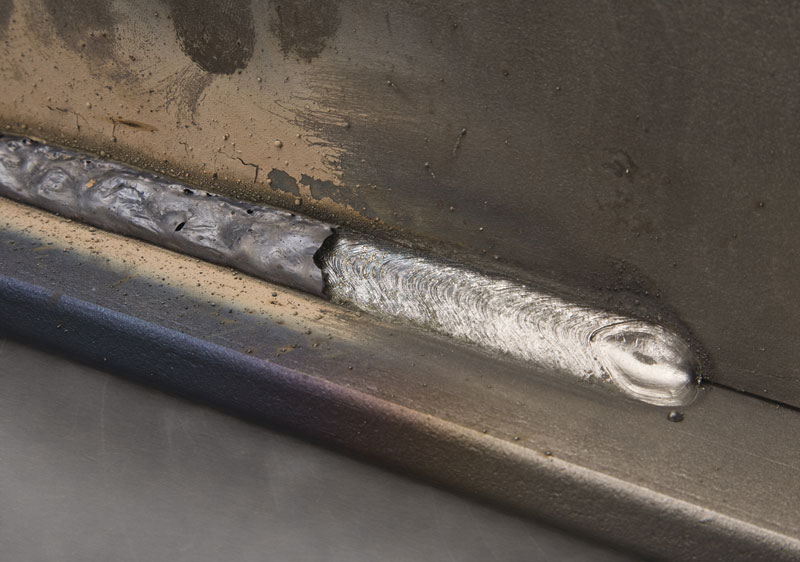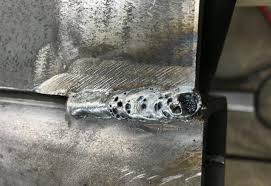Deciphering the Enigma of Porosity in Welding: Tips for Reducing Issues and Making The Most Of Quality
In the complex globe of welding, porosity remains a relentless obstacle that can significantly affect the high quality and honesty of bonded joints. As we dive into the midsts of porosity in welding, revealing the tricks to its prevention and control will certainly be vital for professionals seeking to understand the art of high-quality weldments.
Recognizing Porosity in Welding
Porosity in welding, a common issue come across by welders, describes the existence of gas pockets or voids in the bonded material, which can jeopardize the stability and high quality of the weld. These gas pockets are typically entraped during the welding process because of various variables such as improper protecting gas, contaminated base products, or wrong welding parameters. The formation of porosity can deteriorate the weld, making it susceptible to cracking and deterioration, inevitably bring about structural failures.
Recognizing the source of porosity is crucial for welders to effectively stop its incident. By identifying the relevance of maintaining appropriate gas securing, guaranteeing the cleanliness of base products, and maximizing welding setups, welders can significantly minimize the chance of porosity formation. Additionally, making use of strategies like preheating the base product, using correct welding strategies, and conducting detailed evaluations post-welding can further aid in lessening porosity problems. Overall, a detailed understanding of porosity in welding is vital for welders to produce high-grade and sturdy welds.

Common Sources Of Porosity
When examining welding procedures for potential top quality issues, recognizing the typical reasons for porosity is important for preserving weld stability and protecting against architectural failings. Porosity, characterized by the visibility of dental caries or voids in the weld steel, can dramatically jeopardize the mechanical buildings of a bonded joint. One common root cause of porosity is improper protecting gas protection. Insufficient protecting gas circulation prices or incorrect gas combinations can bring about atmospheric contamination, leading to porosity development.
One more widespread source of porosity is the visibility of wetness and pollutants externally of the base metal or filler material. When welding products are not properly cleansed or are exposed to high levels of humidity, the vaporization of these contaminants throughout welding can create spaces within the weld grain. Furthermore, welding at improper specifications, such as excessively high traveling rates or currents, can produce excessive turbulence in the weld swimming pool, capturing gases and triggering porosity. By resolving these common causes via appropriate gas shielding, product preparation, and adherence to optimal welding specifications, welders can lessen porosity and improve the quality of their welds.
Techniques for Porosity Prevention
Applying effective safety nets is essential in decreasing the occurrence of porosity in welding procedures. One strategy for porosity prevention is making sure correct cleaning of the click now base metal prior to welding. Impurities such as oil, grease, rust, and paint can bring about porosity, so extensive cleansing using suitable solvents or mechanical methods is important.

Utilizing top notch filler materials and protecting gases that are appropriate for the base steel and welding procedure can significantly minimize the danger of porosity. Furthermore, preserving appropriate welding criteria, such as voltage, existing, travel rate, and gas circulation price, is essential for porosity avoidance.
In addition, using correct welding techniques, such as maintaining a consistent traveling speed, electrode angle, and arc length, can aid stop porosity (What is Porosity). Appropriate training of welders to ensure they adhere to ideal practices and quality control treatments is likewise important in minimizing porosity issues in welding

Ideal Practices for Quality Welds
One trick method is maintaining correct tidiness in the welding area. Thoroughly cleaning up the workpiece and surrounding location before go to my site welding can aid alleviate these problems.
One more finest practice is to very carefully select the proper welding criteria for the particular products being signed up with. Proper specification selection ensures optimal weld infiltration, combination, and total quality. Utilizing top notch welding consumables, such as electrodes and filler steels, can dramatically impact the final weld quality.
Relevance of Porosity Control
Porosity control plays a crucial duty in ensuring the honesty and top quality of welding joints. Porosity, defined by the visibility of cavities or voids within the weld metal, can significantly endanger the mechanical properties and architectural honesty of the weld. Too much porosity weakens the weld, making it much more vulnerable to breaking, corrosion, and general failure under functional loads.
Reliable porosity control is necessary for preserving the preferred mechanical homes, such as strength, ductility, and durability, of the welded joint. What is Porosity. By reducing porosity, welders can boost the general quality and integrity of the weld, making sure that it fulfills the performance demands of the designated application
Moreover, porosity control is crucial for achieving the preferred visual look of the weld. Extreme porosity not just weakens the weld but likewise takes away from its visual appeal, which can be crucial in markets where visual appeals are vital. Correct porosity control techniques, such as using the right securing gas, controlling the welding criteria, and making sure proper sanitation of the base materials, are necessary for producing premium welds with minimal defects.

Final Thought
In verdict, porosity in welding is a typical issue that can endanger the quality of the weld. It click for info is necessary to regulate porosity in welding to make sure the stability and strength of the last item.